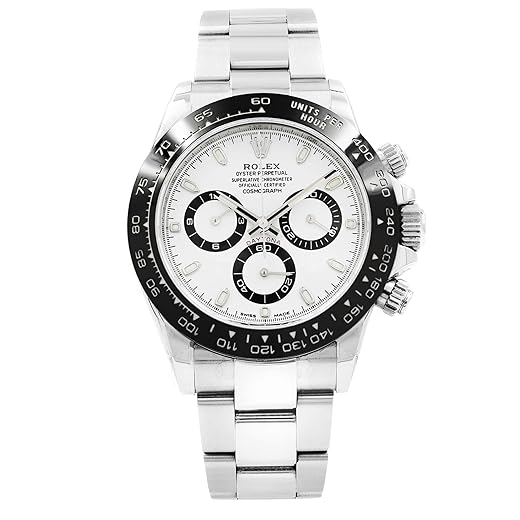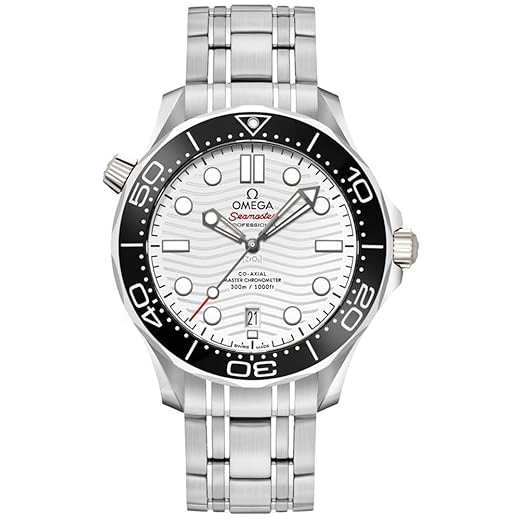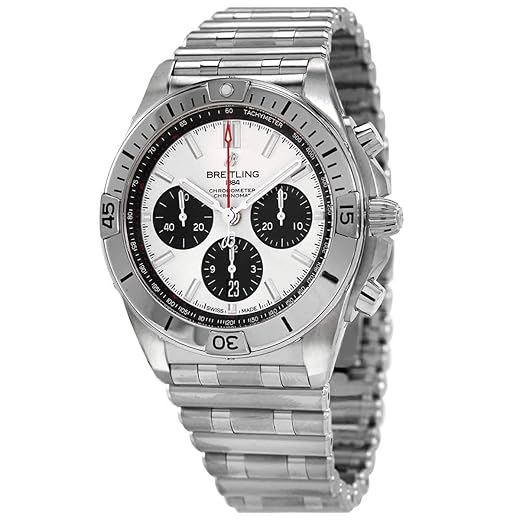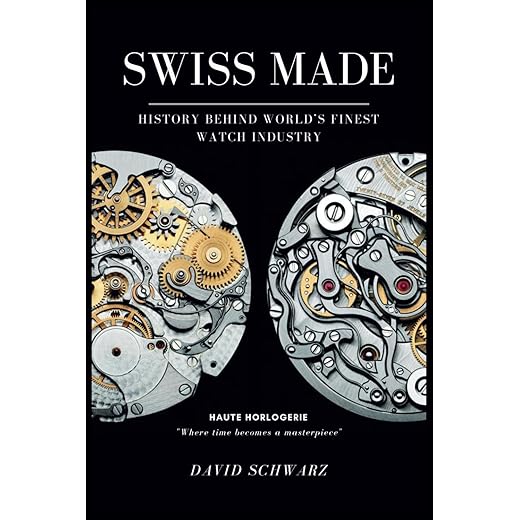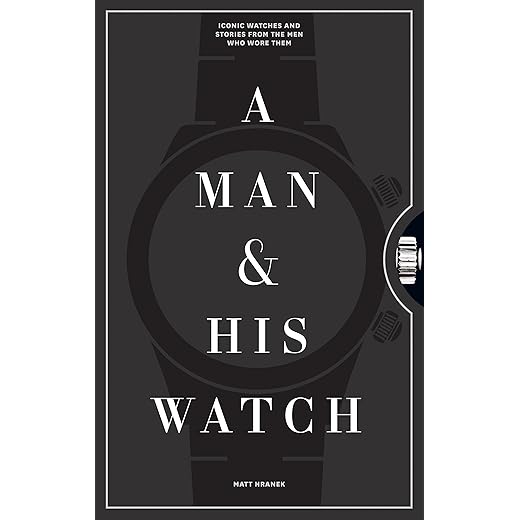Rolex Daytona: A Legacy of Excellence
The Rolex Daytona has long stood as an emblem of luxury and precision in the horological world. Originally launched in 1963, this exquisite timepiece was designed with motorsport enthusiasts in mind. The name “Daytona” pays homage to the famous Daytona International Speedway in Florida, where car racing is an integral part of the American automotive culture. The connection to motorsport not only underlines the watch’s functionality but also its status as a symbol of prestige and excellence.
The Daytona’s chronograph function is one of its standout features, allowing for precise timing—a crucial element in racing scenarios. The watch boasts an intricate mechanism that enables users to measure elapsed time with accuracy. Unlike standard timekeeping, the chronograph feature is activated via pushers located on the side of the case, further enhancing its functionality. This meticulous engineering speaks volumes about Rolex’s dedication to crafting superior timepieces.
Rolex’s attention to detail is evident in the design of the Daytona. From its high-visibility dials to the use of premium materials, every element is thoughtfully chosen. The watch is typically crafted from stainless steel, gold, or platinum, each providing a unique aesthetic and durability. Additionally, the use of scratch-resistant sapphire crystal ensures that the watch remains a lasting investment, maintaining its appearance over time. The integration of both aesthetic appeal and technical excellence has led to the Daytona becoming a sought-after collector’s item, affirming its legacy in the realm of luxury watches.
The skilled craftsmanship and innovative technology that define the Rolex Daytona exemplify its status as a premier luxury watch. This fusion of elegance and functionality is what makes the Daytona not only a timekeeping instrument but a cultural icon that continues to captivate enthusiasts and collectors alike.
The Rolex Daytona is a marvel of precision engineering and craftsmanship. Here are the key steps involved in its making:
1. Design and Engineering
- Conceptualization: The design process begins with conceptual sketches and detailed engineering plans. The Daytona’s iconic look, including its tachymeter bezel and subdials, is meticulously planned.
- Prototyping: Prototypes are created to test the design and functionality. Adjustments are made based on feedback and testing results.
2. Material Selection
- Stainless Steel: The case is typically made from Rolex’s proprietary Oystersteel (904L stainless steel), known for its corrosion resistance and durability.
- Ceramic Bezel: The bezel is made from Cerachrom, a high-tech ceramic material that is highly scratch-resistant and maintains its color over time.
3. Movement Assembly
- Calibre 4130: The Daytona is powered by the in-house automatic Calibre 4130 movement, which offers a 72-hour power reserve and exceptional precision.
- Component Fabrication: Each component of the movement is meticulously crafted and assembled. This includes the escapement, gears, and mainspring.
4. Case and Dial Production
- Case Machining: The stainless steel case is machined to precise specifications. It undergoes multiple finishing processes, including polishing and brushing.
- Dial Manufacturing: The dial is crafted with great attention to detail, ensuring that the subdials and markers are perfectly aligned and legible.
5. Assembly
- Movement Installation: The movement is carefully installed in the case, ensuring proper alignment and functionality.
- Crown and Pushers: The screw-down crown and chronograph pushers are installed, providing water resistance and precise control over the chronograph functions.
6. Quality Control
- Testing: Each watch undergoes rigorous testing to ensure accuracy, water resistance, and overall quality. This includes testing the movement, case, and dial.
- Final Inspection: A final inspection is conducted to ensure that the watch meets Rolex’s high standards of quality and precision.
7. Strap and Bracelet Attachment
- Oyster Bracelet: The Oyster bracelet, known for its durability and comfort, is attached to the case. The bracelet includes the Oysterlock clasp and Easylink extension system for a perfect fit.
8. Final Packaging
- Presentation: The finished watch is carefully placed in a Rolex box, along with documentation and a warranty card. It is then ready for sale.
The Rolex Daytona is a testament to the brand’s commitment to excellence and precision in watchmaking. Each step in its production is carried out with the utmost care and attention to detail.
Omega Seamaster Diver 300M: Crafting Excellence Underwater
The Omega Seamaster Diver 300M epitomizes the union of technical innovation and aesthetic beauty, marking a significant milestone in the realm of horology. Celebrated for its impressive performance and versatility, this timepiece is equally revered by professional divers and watch aficionados. At the heart of its design lies a resilient structure, meticulously engineered to withstand the formidable challenges of underwater exploration. The watch features a robust stainless-steel case that provides unparalleled durability while maintaining a sophisticated appearance.
One of the defining characteristics of the Seamaster Diver 300M is its remarkable water resistance, boasting the capability to withstand depths of up to 300 meters. This exceptional level of performance is achieved through rigorous engineering, including the use of a helium escape valve, which safeguards the watch against potential damage during saturation diving. Each timepiece undergoes stringent testing, ensuring that it adheres to the high standards set by the Swiss watchmaking industry. Such advancements in engineering not only enhance the functionality of the watch but also instill confidence in the wearer regarding its resilience under extreme conditions.
The meticulous attention to detail is evident in the design choices made for the Omega Seamaster Diver 300M. The ceramic bezel is not merely a protective feature; it also serves as a functional tool for timing underwater excursions. Coupled with the intricate movement within, the watch embodies a perfect balance of form and function. The automatic caliber ensures precise timekeeping, further solidifying Omega’s reputation for excellence in craftsmanship. In essence, the Seamaster Diver 300M represents more than just a diving watch; it is a testament to the artistry and dedication of skilled artisans, culminating in a timepiece that exceeds both aesthetic and performance expectations.
Here are the key steps involved in the making of an Omega Seamaster:
1. Design and Engineering
- Conceptualization: The design process begins with conceptual sketches and detailed engineering plans. The Seamaster’s iconic look, including its wave-patterned dial and helium release valve, is meticulously planned.
- Prototyping: Prototypes are created to test the design and functionality. Adjustments are made based on feedback and testing results.
2. Material Selection
- Stainless Steel: The case is typically made from Omega’s proprietary stainless steel, known for its strength and corrosion resistance.
- Ceramic Bezel: The bezel is made from high-tech ceramic, which is highly scratch-resistant and maintains its color over time.
- Sapphire Crystal: The watch face is protected by a sapphire crystal, known for its extreme scratch resistance.
3. Movement Assembly
- Calibre 8900: The Seamaster is powered by Omega’s in-house automatic Calibre 8900 movement, which offers a 60-hour power reserve and exceptional precision.
- Component Fabrication: Each component of the movement is meticulously crafted and assembled. This includes the escapement, gears, and mainspring.
4. Case and Dial Production
- Case Machining: The stainless steel case is machined to precise specifications. It undergoes multiple finishing processes, including polishing and brushing.
- Dial Manufacturing: The dial is crafted with great attention to detail, ensuring that the markers and subdials are perfectly aligned and legible.
5. Assembly
- Movement Installation: The movement is carefully installed in the case, ensuring proper alignment and functionality.
- Crown and Pushers: The screw-down crown and pushers are installed, providing water resistance and precise control over the watch’s functions.
6. Quality Control
- Testing: Each watch undergoes rigorous testing to ensure accuracy, water resistance, and overall quality. This includes testing the movement, case, and dial.
- Final Inspection: A final inspection is conducted to ensure that the watch meets Omega’s high standards of quality and precision.
7. Strap and Bracelet Attachment
- Seamaster Bracelet: The Seamaster bracelet, known for its durability and comfort, is attached to the case. The bracelet includes a helium release valve and a diver’s extension for a perfect fit.
8. Final Packaging
- Presentation: The finished watch is carefully placed in an Omega box, along with documentation and a warranty card. It is then ready for sale.
The Omega Seamaster is a testament to the brand’s commitment to excellence and precision in watchmaking. Each step in its production is carried out with the utmost care and attention to detail.
Breitling Chronomat: Precision Meets Performance
Breitling has established itself as a leader in the luxury watch industry, renowned for its commitment to precision and performance. The Chronomat collection is a shining example of these core values, featuring a design that is as functional as it is stylish. Introduced in 1942, the Chronomat was initially created for aviation purposes, catering specifically to pilots who required a reliable chronograph for their demanding professions. Its distinctive design and robust functionality have helped it earn a revered reputation over the decades.
The Chronomat incorporates an exceptional chronograph function, allowing users to measure elapsed time with accuracy. This capability is not merely a novelty; it is a fundamental requirement for pilots and athletes, who depend on precision timing in their respective fields. Its iconic rotating bezel, inscribed with a tachymetric scale, further enhances its practicality, enabling wearers to calculate speed over distance, which is crucial in both aeronautical and automotive contexts.
In conclusion, the Breitling Chronomat stands as a testament to the brand’s ability to harmoniously blend precision with performance. Whether soaring through the skies or navigating the complexities of daily life, the Chronomat is designed to be a reliable and stylish companion, showcasing the pinnacle of watchmaking expertise.
Here are the key steps involved in the making of a Breitling Chronomat:
1. Design and Engineering
- Conceptualization: The design process begins with conceptual sketches and detailed engineering plans. The Chronomat’s iconic look, including its chronograph functionality and slide rule bezel, is meticulously planned.
- Prototyping: Prototypes are created to test the design and functionality. Adjustments are made based on feedback and testing results.
2. Material Selection
- Stainless Steel: The case is typically made from high-quality stainless steel, known for its strength and corrosion resistance.
- Ceramic Bezel: The bezel is made from high-tech ceramic, which is highly scratch-resistant and maintains its color over time.
- Sapphire Crystal: The watch face is protected by a sapphire crystal, known for its extreme scratch resistance.
3. Movement Assembly
- Calibre 01: The Chronomat is powered by Breitling’s in-house automatic Calibre 01 movement, which offers exceptional precision and a 70-hour power reserve.
- Component Fabrication: Each component of the movement is meticulously crafted and assembled. This includes the escapement, gears, and mainspring.
4. Case and Dial Production
- Case Machining: The stainless steel case is machined to precise specifications. It undergoes multiple finishing processes, including polishing and brushing.
- Dial Manufacturing: The dial is crafted with great attention to detail, ensuring that the subdials and markers are perfectly aligned and legible.
5. Assembly
- Movement Installation: The movement is carefully installed in the case, ensuring proper alignment and functionality.
- Crown and Pushers: The screw-down crown and chronograph pushers are installed, providing water resistance and precise control over the watch’s functions.
6. Quality Control
- Testing: Each watch undergoes rigorous testing to ensure accuracy, water resistance, and overall quality. This includes testing the movement, case, and dial.
- Final Inspection: A final inspection is conducted to ensure that the watch meets Breitling’s high standards of quality and precision.
7. Strap and Bracelet Attachment
- Chronomat Bracelet: The Chronomat bracelet, known for its durability and comfort, is attached to the case. The bracelet includes a folding clasp for a secure fit.
8. Final Packaging
- Presentation: The finished watch is carefully placed in a Breitling box, along with documentation and a warranty card. It is then ready for sale.
The Breitling Chronomat is a testament to the brand’s commitment to excellence and precision in watchmaking. Each step in its production is carried out with the utmost care and attention to detail.
Is it correct to say that each manufacturer follows the same basic steps but differs in their proprietary in-house technology, assembling, and their skilled workers?
Yes, that’s a fair assessment! The basic steps in the watchmaking process—such as design and engineering, material selection, movement assembly, case and dial production, assembly, quality control, strap and bracelet attachment, and final packaging—are generally consistent across luxury watch manufacturers like Rolex, Omega, and Breitling.
However, each brand distinguishes itself through its proprietary in-house technologies, unique assembly processes, and the expertise of its skilled workers. These differences can include:
- In-House Movements: Each brand often develops its own in-house movements with unique features, such as Rolex’s Calibre 4130, Omega’s Calibre 8900, and Breitling’s Calibre 01.
- Materials: Brands may use proprietary materials, like Rolex’s Oystersteel and Cerachrom, Omega’s Liquidmetal and Sedna gold, and Breitling’s special alloys.
- Craftsmanship: The skill level and techniques of the watchmakers play a significant role in the quality and uniqueness of the final product. Each brand has its own standards and methods for training and developing its artisans.
- Design Philosophy: While the basic steps are similar, the design philosophy and aesthetic details unique to each brand influence the overall look and feel of their watches.
- Innovation: Brands often innovate in specific areas, such as water resistance, chronograph functionality, or anti-magnetic properties, to differentiate their watches and appeal to their target audiences.
These nuances contribute to the distinct identity and appeal of each brand’s timepieces.
If at the end of this post, you have come away with the feeling that it is repetitive and lengthy, please be assured, this was on purpose. The mere reading about each of these watches, and the process of watch-making can appear boring. It can be tiresome. Yet, look at each one of these watches and the companies that make them. Meticulous, repetitive, and excellence in every step. At any point, something can go wrong and the whole endeavor can fall apart. However, with remarkable precision and patience each timepiece is made. Rightly, they fetch an extraordinary value with cost to the buyer because one is paying for the final product of such industry. Let’s value what the Swiss Made brand stands for. Let’s value what each of these watchmakers has been doing for such a long time.



